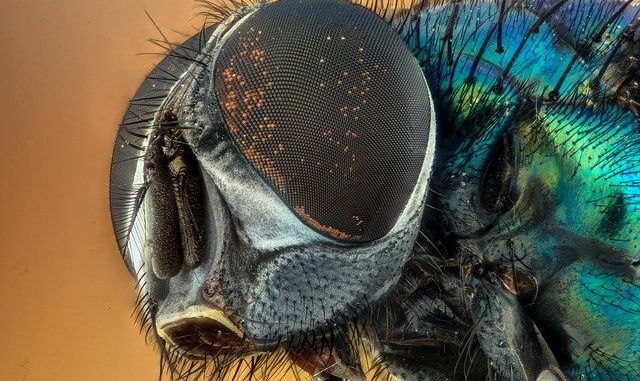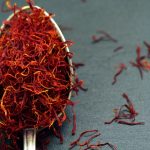
Spinosyns are a natural class of insecticides that have a broad range of actions against a number of pests. They are produced by the soil Actinomycete Saccharopolyspora spinosa. (Kirst et al., 1991). It is a bacteria. They are considered to be suitable for commercial use because they are naturally produced and thus of low environmental impact. They are known collectively as a mixture called spinosad which is made up of the A & D forms. There are other types such as B,C, etc.
The insecticide was first identified in 1982 and commercial production began in 1997. It is applied as soluble concentrate in spray form and is marketed by Dow AgroSciences.
There is a very comprehensive review Bacci et al., (2016) which covers the all the main aspects of this biopesticide.
Structure:
A polyketide and also a 21-carbon tetrayclic lactone or macrolide. It is produced as mixture of spinosyn A (85%) and spinosyn D (10–15%) which is known as Spinosad.
Two deoxysugars are attached: a neutral sugar (rhamnose) and an amino sugar (forosamine). When the amino sugar is absent, the compounds are called pseudoaglycones. If the neutral sugar is missing then these compounds are reverse pseudoaglycones.
Spinosyn A has the IUPAC name – (2R,3aS,5aR,5bS,9S,13S,14R,16aS,16bR)-2-(6-deoxy-2,3,4-tri-O-methyl-α-L-mannopyranosyloxy)-tetradeoxy-β-D-erythropyranosyloxy)-9-ethyl-2,3,3a,5a,5b,6,7,9,10,11,12,13,14,15,16a,16b-hexadecahydro-14-methyl-1H-as-indaceno[3,2-d]oxacyclododecine-7,15-dione. The CAS name is: (2R,3aS,5aR,5bS,9S,13S,14R,16aS,16bR)–((6-deoxy-2,3,4-tri-O-methyl-α-L-mannopyranosyl)oxy)-13-(((2R,5S,6R)-5-(dimethylamino) tetrahydro-6-methyl-2H-pyran-2-yl)oxy)-9-ethyl-2,3,3a,5a,5b,6,9,10,11,12,13,14,16a,16b-16b-tetradecahydro-14-methyl-1H-as-indaceno[3,2-d]oxacyclododecin-7,15-dione.
Manufacture:
Total synthesis of (-)-spinosyn A is described (Mergott et al., 2004).
Fermentation
Conventionally, spinosad is produced from S. spinosa but other species are also used industrially such as Saccharopolus foraminifera ATCC49460. Whichever strain or species is used, production yields are extremely low and industrial development is difficult to achieve. New strains are continually being sought.
In a fermentation, feedback inhibition of spinosyn by rhamnose or anyone of the spinosyns is possible. Mutations of the bacteria are sought which overcome this growth inhibition.
A typical fermentation medium is glucose, yeast extract and peptone. The optimal amount of each is 10 g/l of glucose, about 3 g/l of yeast extract and about 30 g/l of peptone. Glucose is the main carbon source. Variants between 10% around these optimum points can be tried depending on the particular characteristics of the microorganism used.
Other fermentation media include 98.0 g of mannitol, 43.0 g of cottonseed flour, 12.9 g of corn steep liquor, 0.5 g of KH2PO4, and 3.0 g of CaCO3 in 1 L of H2O; pH was adjusted to 7.0 before autoclaving. Mannitol and glucose improve spinosad production.
Incubation temperature is 30 ºC.
A yield using the mutant strains of S. foraminifera is upto 0.76 g/L. Given this yield, the broth itself could be treated with antimicrobial agents once the bacteria is removed and sprayed directly onto the plants. That concentration level is very high.
Purification From Cultured Broth
Given that spinosyn production by fermentation is not yet high enough, considerable effort has been expended to stimulate overproduction in the host actinomycete (Tao et al., 2018).
The basic large-scale process is to use a plate and frame filter. This produces a filtrate which is flash evaporated and dried.
A high-performance countercurrent chromatography (HPCCC) process was developed as a more efficient and sustainable alternative to reverse phase high-performance liquid chromatography (RP-HPLC) for pilot-scale purification of both spinosyns (DeAmicis et al., 2017).
A typical method is to recover the microorganism including its mycelium by microfiltration and allowing the filtrate to pass through the membrane system. The system has to be operated as gently as possible to ensure there is not too much fracturing of the mycelia. The membrane filtrate is then extracted using different solvents such as n-butanol at pH 8.2. An alternative is to bind the whole mixture using column chromatography. The Spinosyn A is desorbed using increasing levels of methanol (Mei et al., 2013).
An alternative technique has been to exploit a two-step adsorption method (Zhao et al., 2015). In this approach, resin is added early on in the fermentation so that spinosyns are adsorbed and removed from the fermentation broth. This encourages overproduction of the spinosyns. After fermentation, a second amount of microporous resin was added. This adsorption-membrane separation process yielded 95.3% purity and 87% yield of Spinosad (undisclosed as to how much A or D). The claim was improved purification yields.
Action:
It acts on contact and through ingestion throughout the different lifestages of any insect. The chemicals act as allosteric activators of nicotinic acetylcholine receptors. In so doing it removes the ability cells to control activity by disrupting acetylcholine transmission. It kills by overexciting the insect’s nervous system producing involuntary muscle contractions and eventually paralysis.
Spinosyns is a collective term for a mixture of insecticides such as spinosad and spinetoram.
Saccharopolyspora spinosa is grown aerobically on a various growth media such as corn solids, soya bean flour and cottonseed flour. It was originally isolated from sugarcane in a rum making facility on the Virgin Islands. The organism is described as Gram-positive with a fragmenting substrate mycelium.
Regulations:
Europe:
Spinosad is authorized from 2007 under the EU Commission Directive 2007/6/EC (European Commission, 2007), with the following updates such as EU Regulations 556/2012 and 2015/603
It is registered for use against a broad range of target pests such as Lepidoptera (pests of cotton), Diptera (fruit flies and mosquitoes), Thysanoptera, Isoptera and Coleoptera. There is plenty of evidence on its toxicity against a variety of pests and it compares extremely favourably with other commercial pesticides.
It has low toxicity against fish.
In terms of shelf-life it retains its activity up to 2 years on application. It has been used for grain treatment.
References
DeAmicis, C., Yang, Q., Bright, C., Edwards, N. A., Harris, G. H., Kaur, S., … & Ignatova, S. (2017). Development of a Scalable and Sustainable High Performance CounterCurrent Chromatography (HPCCC) Purification for Spinosyn A and Spinosyn D from Spinosad. Organic Process Research & Development, 21(10), pp. 1638-1643
Jin, Z. H., Xu, B., & Lin, S. Z. (2008). Enhanced production of spinosad in Saccharopolyspora spinosa by genome shuffling. Applied Biochemistry and Biotechnology. doi:10.1007/s12010-008-8500-027.
Kirst HA, Miche KH, Martin JW, Creemer LC, Chio EH, Yao RC, Nakatsukasa WM, Boeck LVD, Occolowitz JL, Paschal JW, Deeter JB, Jones ND, Thompson GD. 1991. A83543A-D, unique fermentation derived tetracyclic macrolides. Tetrahedron Lett. 32 pp. 4839 –4842 (Article).
Mei, G., Liu, S. Y., Ma, D. Y., & Xie, D. D. (2013). Study on Purification of Spinosad A from Spinosad API. Fine Chemical Intermediates, 43(4).
Mergott, D. J., Frank, S. A., & Roush, W. R. (2004). Total synthesis of (–)-spinosyn A. Proceedings of the National Academy of Sciences, 101(33), pp. 11955-11959
Tao, H., Zhang, Y., Deng, Z., & Liu, T. (2019). Strategies for enhancing the yield of the potent insecticide spinosad in actinomycetes. Biotechnology Journal, 14(1), 1700769
Thompson GD, Michel KH, Yao RC, Mynderse JS, Mosburg CT, Worden TV, Chio EH, Sparks TC, Hutchins SH. (1997) The discovery of Saccharopolyspora spinosa and a new class of insect control products. Down Earth 52 pp. 1–5
Zhao, F., Zhang, C., Yin, J., Shen, Y., & Lu, W. (2015). Coupling of spinosad fermentation and separation process via two-step macroporous resin adsorption method. Applied Biochemistry and Biotechnology, 176(8), pp. 2144-2156.

Leave a Reply